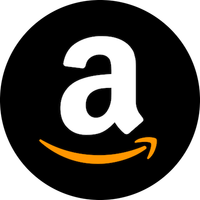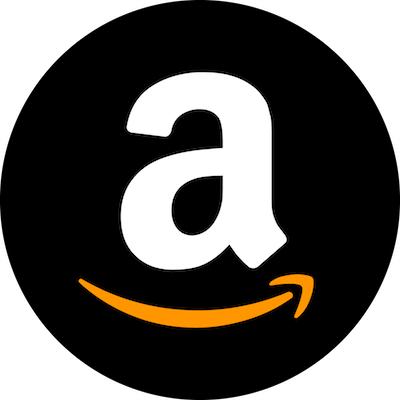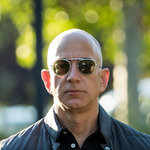
Amazon.com Inc
NASDAQ:AMZN


| US |

|
Johnson & Johnson
NYSE:JNJ
|
Pharmaceuticals
|
| US |

|
Berkshire Hathaway Inc
NYSE:BRK.A
|
Financial Services
|
| US |

|
Bank of America Corp
NYSE:BAC
|
Banking
|
| US |

|
Mastercard Inc
NYSE:MA
|
Technology
|
| US |

|
UnitedHealth Group Inc
NYSE:UNH
|
Health Care
|
| US |

|
Exxon Mobil Corp
NYSE:XOM
|
Energy
|
| US |

|
Pfizer Inc
NYSE:PFE
|
Pharmaceuticals
|
| US |

|
Palantir Technologies Inc
NYSE:PLTR
|
Technology
|
| US |

|
Nike Inc
NYSE:NKE
|
Textiles, Apparel & Luxury Goods
|
| US |

|
Visa Inc
NYSE:V
|
Technology
|
| CN |

|
Alibaba Group Holding Ltd
NYSE:BABA
|
Retail
|
| US |

|
JPMorgan Chase & Co
NYSE:JPM
|
Banking
|
| US |

|
Coca-Cola Co
NYSE:KO
|
Beverages
|
| US |

|
Walmart Inc
NYSE:WMT
|
Retail
|
| US |

|
Verizon Communications Inc
NYSE:VZ
|
Telecommunication
|
| US |

|
Chevron Corp
NYSE:CVX
|
Energy
|
Utilize notes to systematically review your investment decisions. By reflecting on past outcomes, you can discern effective strategies and identify those that underperformed. This continuous feedback loop enables you to adapt and refine your approach, optimizing for future success.
Each note serves as a learning point, offering insights into your decision-making processes. Over time, you'll accumulate a personalized database of knowledge, enhancing your ability to make informed decisions quickly and effectively.
With a comprehensive record of your investment history at your fingertips, you can compare current opportunities against past experiences. This not only bolsters your confidence but also ensures that each decision is grounded in a well-documented rationale.
Do you really want to delete this note?
This action cannot be undone.

| 52 Week Range |
167.32
254
|
| Price Target |
|
We'll email you a reminder when the closing price reaches USD.
Choose the stock you wish to monitor with a price alert.

|
Johnson & Johnson
NYSE:JNJ
|
US |

|
Berkshire Hathaway Inc
NYSE:BRK.A
|
US |

|
Bank of America Corp
NYSE:BAC
|
US |

|
Mastercard Inc
NYSE:MA
|
US |

|
UnitedHealth Group Inc
NYSE:UNH
|
US |

|
Exxon Mobil Corp
NYSE:XOM
|
US |

|
Pfizer Inc
NYSE:PFE
|
US |

|
Palantir Technologies Inc
NYSE:PLTR
|
US |

|
Nike Inc
NYSE:NKE
|
US |

|
Visa Inc
NYSE:V
|
US |

|
Alibaba Group Holding Ltd
NYSE:BABA
|
CN |

|
JPMorgan Chase & Co
NYSE:JPM
|
US |

|
Coca-Cola Co
NYSE:KO
|
US |

|
Walmart Inc
NYSE:WMT
|
US |

|
Verizon Communications Inc
NYSE:VZ
|
US |

|
Chevron Corp
NYSE:CVX
|
US |
This alert will be permanently deleted.
Amazon.com Inc





Amazon.com Inc., founded by Jeff Bezos in 1994, began its journey as an unassuming online bookstore in a small garage in Bellevue, Washington. With a vision far ahead of his time, Bezos was keenly aware of the untapped potential of the Internet, and as the web grew, so did Amazon. The company's initial focus on books provided a perfect entry into the digital space, but its model was designed for expansion. As it evolved, Amazon quickly diversified its offerings, venturing into electronics, clothing, groceries, and virtually every consumer product imaginable. By constantly redefining e-commerce, it transformed into a behemoth through strategic investments and innovations in technology and logistics. Key to its success was the seamless user experience it offered, supported by an expansive network of fulfillment centers and sophisticated data algorithms that personalized shopping experiences for millions of customers worldwide.
Beyond its direct retail operations, Amazon ingeniously expanded its economic footprint through Amazon Web Services (AWS), launched in 2006. AWS pioneered the commercialization of cloud computing services, providing scalable and cost-effective infrastructure solutions to businesses ranging from startups to global corporations. Today, AWS stands as a substantial revenue driver for Amazon, frequently contributing a significant portion of the company’s operating income due to its higher margin compared to retail. Furthermore, Amazon's ecosystem is bolstered by its Prime subscription model, which not only incentivizes customer loyalty with perks like free shipping and access to streaming services but also generates a steady flow of predictable income. These diverse revenue streams, supported by relentless innovation and customer-centric focus, underpin Amazon’s status as one of the most influential companies in the global marketplace.

Amazon.com Inc., founded by Jeff Bezos in 1994, began its journey as an unassuming online bookstore in a small garage in Bellevue, Washington. With a vision far ahead of his time, Bezos was keenly aware of the untapped potential of the Internet, and as the web grew, so did Amazon. The company's initial focus on books provided a perfect entry into the digital space, but its model was designed for expansion. As it evolved, Amazon quickly diversified its offerings, venturing into electronics, clothing, groceries, and virtually every consumer product imaginable. By constantly redefining e-commerce, it transformed into a behemoth through strategic investments and innovations in technology and logistics. Key to its success was the seamless user experience it offered, supported by an expansive network of fulfillment centers and sophisticated data algorithms that personalized shopping experiences for millions of customers worldwide.
Beyond its direct retail operations, Amazon ingeniously expanded its economic footprint through Amazon Web Services (AWS), launched in 2006. AWS pioneered the commercialization of cloud computing services, providing scalable and cost-effective infrastructure solutions to businesses ranging from startups to global corporations. Today, AWS stands as a substantial revenue driver for Amazon, frequently contributing a significant portion of the company’s operating income due to its higher margin compared to retail. Furthermore, Amazon's ecosystem is bolstered by its Prime subscription model, which not only incentivizes customer loyalty with perks like free shipping and access to streaming services but also generates a steady flow of predictable income. These diverse revenue streams, supported by relentless innovation and customer-centric focus, underpin Amazon’s status as one of the most influential companies in the global marketplace.
Revenue Growth: Amazon reported Q3 revenue of $180.2 billion, up 12% year-over-year, with strong growth across all segments.
AWS Acceleration: AWS revenue grew 20.2% year-over-year to $33 billion, marking its fastest growth in 11 quarters and a $132 billion annualized run rate.
Operating Income Impacted: Operating income was $17.4 billion, but would have been $21.7 billion excluding special charges for an FTC settlement and severance costs.
AI & Chip Investments: Significant investments continued in AI, custom silicon (Trainium), and data center capacity, with Trainium revenue up 150% quarter-over-quarter and major projects like Project Rainier with Anthropic highlighted.
Advertising Momentum: Advertising revenue reached $17.7 billion, growing 22% year-over-year, with strength in full funnel offerings, new partnerships, and Prime Video.
Grocery & Fulfillment: Same-day perishable grocery delivery expanded to 1,000 cities, driving higher customer repeat rates, and Amazon is committed to further growth and innovation in this area.
Cost Structure & Efficiency: Ongoing focus on inventory placement, robotics, and automation is driving improved speed, productivity, and customer experience while managing headcount and costs.
Management

Jeffrey P. Bezos is the founder and former CEO of Amazon.com, Inc., one of the world's largest and most successful e-commerce companies. Born on January 12, 1964, in Albuquerque, New Mexico, Bezos showed an early interest in how things work, turning his parents' garage into a laboratory and rigging electrical contraptions around his house. Bezos graduated from Princeton University in 1986 with degrees in electrical engineering and computer science. After college, he worked on Wall Street in a variety of related fields, including a role at D. E. Shaw & Co., a hedge fund. In 1994, he left his lucrative job to found Amazon, initially an online bookstore, operating out of a garage in Seattle, Washington. Under Bezos’s leadership, Amazon rapidly expanded beyond books to become a dominant force in online retail. Known for his customer-centric approach and innovative strategies, Bezos diversified the company's offerings into numerous sectors, including digital streaming, cloud computing with Amazon Web Services (AWS), and artificial intelligence with products like Alexa. His commitment to innovation extended to creating physical stores without checkouts and the development of delivery drones. Throughout his tenure, Bezos was known for his focus on long-term growth and reinvestment of profits into the business, which occasionally drew criticism from Wall Street while enabling Amazon to stay at the forefront of technology and retail operations. In addition to his work with Amazon, Bezos founded Blue Origin, a space exploration company, in 2000, with the aim of reducing the cost of space travel and eventual human colonization of space. Blue Origin has successfully launched several suborbital missions and is working on more ambitious projects, such as orbital and lunar missions. In February 2021, Bezos announced that he would step down as CEO of Amazon to focus on other ventures, including Blue Origin and The Washington Post, which he owns. He transitioned to the role of Executive Chairman in July 2021, handing over the CEO position to Andy Jassy. Bezos has been the recipient of numerous awards and honors, reflecting his impact on business and technology, and his influence extends beyond his companies to philanthropy, notably through initiatives like the Bezos Earth Fund, focusing on climate change, and the Bezos Day One Fund, supporting homeless families and education. His leadership style and business acumen have left a lasting imprint on global commerce and technology.

Bezos graduated from Princeton University in 1986 with degrees in electrical engineering and computer science. After college, he worked on Wall Street in a variety of related fields, including a role at D. E. Shaw & Co., a hedge fund. In 1994, he left his lucrative job to found Amazon, initially an online bookstore, operating out of a garage in Seattle, Washington.
Under Bezos’s leadership, Amazon rapidly expanded beyond books to become a dominant force in online retail. Known for his customer-centric approach and innovative strategies, Bezos diversified the company's offerings into numerous sectors, including digital streaming, cloud computing with Amazon Web Services (AWS), and artificial intelligence with products like Alexa. His commitment to innovation extended to creating physical stores without checkouts and the development of delivery drones.
Throughout his tenure, Bezos was known for his focus on long-term growth and reinvestment of profits into the business, which occasionally drew criticism from Wall Street while enabling Amazon to stay at the forefront of technology and retail operations.
In addition to his work with Amazon, Bezos founded Blue Origin, a space exploration company, in 2000, with the aim of reducing the cost of space travel and eventual human colonization of space. Blue Origin has successfully launched several suborbital missions and is working on more ambitious projects, such as orbital and lunar missions.
In February 2021, Bezos announced that he would step down as CEO of Amazon to focus on other ventures, including Blue Origin and The Washington Post, which he owns. He transitioned to the role of Executive Chairman in July 2021, handing over the CEO position to Andy Jassy.
Bezos has been the recipient of numerous awards and honors, reflecting his impact on business and technology, and his influence extends beyond his companies to philanthropy, notably through initiatives like the Bezos Earth Fund, focusing on climate change, and the Bezos Day One Fund, supporting homeless families and education. His leadership style and business acumen have left a lasting imprint on global commerce and technology.

Andrew R. Jassy is the President and Chief Executive Officer (CEO) of Amazon.com Inc., a role he assumed on July 5, 2021, succeeding the company's founder, Jeff Bezos. Jassy has been a pivotal figure in Amazon's corporate history, primarily due to his instrumental role in developing and expanding Amazon Web Services (AWS), the company's highly profitable cloud computing division. Jassy joined Amazon in 1997, right after completing his MBA at Harvard Business School. He was a significant part of the team that initially formulated the idea for AWS, which launched in 2006. Under Jassy's leadership, AWS grew into a multi-billion-dollar business, becoming the world's leading cloud services platform, which considerably contributes to Amazon's overall profitability. Known for his strategic acumen and deep understanding of the technology sector, Jassy has been recognized for fostering innovation and driving business growth. His leadership style is often described as detail-oriented and principled, with a focus on customer-centric solutions. Before becoming CEO, Jassy served as the CEO of AWS from its inception until July 2021. His transition to the role of Amazon's CEO marked a significant shift in the company's leadership, reflecting the growing importance of cloud services within Amazon's broader business strategy. Jassy's tenure as CEO is expected to emphasize continued innovation and expansion across Amazon's diverse portfolio of services.

Jassy joined Amazon in 1997, right after completing his MBA at Harvard Business School. He was a significant part of the team that initially formulated the idea for AWS, which launched in 2006. Under Jassy's leadership, AWS grew into a multi-billion-dollar business, becoming the world's leading cloud services platform, which considerably contributes to Amazon's overall profitability.
Known for his strategic acumen and deep understanding of the technology sector, Jassy has been recognized for fostering innovation and driving business growth. His leadership style is often described as detail-oriented and principled, with a focus on customer-centric solutions.
Before becoming CEO, Jassy served as the CEO of AWS from its inception until July 2021. His transition to the role of Amazon's CEO marked a significant shift in the company's leadership, reflecting the growing importance of cloud services within Amazon's broader business strategy. Jassy's tenure as CEO is expected to emphasize continued innovation and expansion across Amazon's diverse portfolio of services.

Brian T. Olsavsky is a prominent executive at Amazon.com Inc., where he has played a crucial role in managing the company's finances. He joined Amazon in 2002 and has held various key positions within the company. Olsavsky became the Chief Financial Officer (CFO) in June 2015, overseeing Amazon's financial operations, including its financial strategy, investor relations, and management of its financial risks. Before becoming CFO, Olsavsky was the Vice President of Finance and CFO for the company’s Global Consumer Business, where he was instrumental in leading the finance functions for Amazon’s worldwide retail and marketplace businesses. His leadership has been pivotal in guiding the company through significant periods of growth and investment in new technologies and services. Prior to joining Amazon, Brian Olsavsky worked at Fisher Scientific, where he held a variety of financial and business management roles. He holds an MBA from Carnegie Mellon University and a Bachelor’s degree from Penn State University. Under his financial stewardship, Amazon has continued to expand its global footprint and diversify its business operations, further cementing its position as a leader in the tech industry.

Before becoming CFO, Olsavsky was the Vice President of Finance and CFO for the company’s Global Consumer Business, where he was instrumental in leading the finance functions for Amazon’s worldwide retail and marketplace businesses. His leadership has been pivotal in guiding the company through significant periods of growth and investment in new technologies and services.
Prior to joining Amazon, Brian Olsavsky worked at Fisher Scientific, where he held a variety of financial and business management roles. He holds an MBA from Carnegie Mellon University and a Bachelor’s degree from Penn State University. Under his financial stewardship, Amazon has continued to expand its global footprint and diversify its business operations, further cementing its position as a leader in the tech industry.

David A. Zapolsky is a prominent legal executive who serves as the Senior Vice President, General Counsel, and Secretary for Amazon.com, Inc. He joined the company in 1999 and has played a vital role in overseeing Amazon's legal, regulatory, and compliance matters. Zapolsky's responsibilities include managing a global team of attorneys and legal professionals while advising the senior leadership team on a wide range of legal issues affecting the company. Before joining Amazon, Zapolsky was a partner at the law firm Dorsey & Whitney LLP, where he specialized in commercial litigation. He holds a Juris Doctor (J.D.) degree from the University of California, Berkeley, School of Law, and an undergraduate degree from Columbia University. David Zapolsky's extensive experience and leadership skills have been instrumental in navigating Amazon through various legal challenges and regulatory environments as the company has grown into a global e-commerce and technology powerhouse.

Before joining Amazon, Zapolsky was a partner at the law firm Dorsey & Whitney LLP, where he specialized in commercial litigation. He holds a Juris Doctor (J.D.) degree from the University of California, Berkeley, School of Law, and an undergraduate degree from Columbia University. David Zapolsky's extensive experience and leadership skills have been instrumental in navigating Amazon through various legal challenges and regulatory environments as the company has grown into a global e-commerce and technology powerhouse.

Douglas J. Herrington is a prominent executive at Amazon.com Inc., known for his significant contributions to the company's retail operations. Serving as the Chief Executive Officer of Worldwide Amazon Stores, Herrington oversees the company's retail business on a global scale. He joined Amazon in 2005, originally leading the Consumables business and later playing a pivotal role in launching Amazon Fresh. With a deep background in retail and consumables, Herrington has been instrumental in expanding Amazon's grocery and consumer goods sectors. Before his tenure at Amazon, he co-founded webvan, an online delivery service for groceries, and held positions at companies such as Guilbert and The Pillsbury Company. Herrington is recognized for his strategic vision and leadership qualities, steering Amazon's retail operations towards innovation and customer-centric approaches. His expertise and long-standing tenure at Amazon underscore his importance in navigating the complexities of the retail industry as e-commerce continues to evolve.

With a deep background in retail and consumables, Herrington has been instrumental in expanding Amazon's grocery and consumer goods sectors. Before his tenure at Amazon, he co-founded webvan, an online delivery service for groceries, and held positions at companies such as Guilbert and The Pillsbury Company.
Herrington is recognized for his strategic vision and leadership qualities, steering Amazon's retail operations towards innovation and customer-centric approaches. His expertise and long-standing tenure at Amazon underscore his importance in navigating the complexities of the retail industry as e-commerce continues to evolve.

Shelley L. Reynolds is a prominent figure at Amazon.com Inc., serving as the Vice President of Worldwide Controller. In her role, Reynolds is responsible for overseeing all aspects of Amazon's accounting operations, financial reporting, and internal controls across its global operations. She plays a crucial role in financial oversight and ensuring the accuracy and integrity of the company's financial statements. Reynolds joined Amazon in 2006 and has since been a key part of the finance leadership team. Her vast experience and expertise significantly contribute to Amazon's robust financial management strategies. Prior to joining Amazon, she gained extensive experience at Deloitte & Touche LLP, where she served in various roles, including audit and advisory services, which provided her with a strong foundation in financial practices and operations. Reynolds is known for her commitment to excellence and her ability to lead complex financial projects and teams, ensuring that Amazon maintains its reputation for transparency and accountability in financial reporting. Her leadership is vital in navigating the challenges of Amazon's vast and dynamic marketplace.

Reynolds joined Amazon in 2006 and has since been a key part of the finance leadership team. Her vast experience and expertise significantly contribute to Amazon's robust financial management strategies. Prior to joining Amazon, she gained extensive experience at Deloitte & Touche LLP, where she served in various roles, including audit and advisory services, which provided her with a strong foundation in financial practices and operations.
Reynolds is known for her commitment to excellence and her ability to lead complex financial projects and teams, ensuring that Amazon maintains its reputation for transparency and accountability in financial reporting. Her leadership is vital in navigating the challenges of Amazon's vast and dynamic marketplace.

Dr. Werner Vogels is a prominent technology executive known for his role as the Chief Technology Officer (CTO) and Vice President at Amazon.com Inc. He joined Amazon in 2004 and has been instrumental in shaping its technology strategy, particularly in the development and adoption of cloud computing through Amazon Web Services (AWS). Dr. Vogels holds a Ph.D. in Computer Science from the Vrije Universiteit Amsterdam in the Netherlands. Before his tenure at Amazon, he was a research scientist at Cornell University, where he focused on scalable and reliable enterprise systems, an area that played a crucial role in his later work at Amazon. As CTO, Dr. Vogels is responsible for driving the company's technological vision and strategy. He is known for his work on Amazon's distributed systems and for being a vocal advocate of cloud computing, which transformed how businesses deploy and manage their IT infrastructure. A respected figure in the tech community, Dr. Vogels often shares insights and innovations through public speaking engagements, his blog "All Things Distributed," and various industry conferences. His work has significantly contributed to Amazon's reputation as a leader in cloud services and technological innovation. Dr. Vogels is recognized for his commitment to customer-centric development, ensuring that Amazon's technology serves the needs of its diverse and global customer base.

Dr. Vogels holds a Ph.D. in Computer Science from the Vrije Universiteit Amsterdam in the Netherlands. Before his tenure at Amazon, he was a research scientist at Cornell University, where he focused on scalable and reliable enterprise systems, an area that played a crucial role in his later work at Amazon.
As CTO, Dr. Vogels is responsible for driving the company's technological vision and strategy. He is known for his work on Amazon's distributed systems and for being a vocal advocate of cloud computing, which transformed how businesses deploy and manage their IT infrastructure.
A respected figure in the tech community, Dr. Vogels often shares insights and innovations through public speaking engagements, his blog "All Things Distributed," and various industry conferences. His work has significantly contributed to Amazon's reputation as a leader in cloud services and technological innovation. Dr. Vogels is recognized for his commitment to customer-centric development, ensuring that Amazon's technology serves the needs of its diverse and global customer base.

Dave Fildes is known for his role at Amazon.com Inc. as the Director of Investor Relations. In this capacity, he serves as a liaison between the company and its shareholders, analysts, and the broader investment community. His role involves communicating Amazon's financial performance, strategic initiatives, and growth plans to investors, which is crucial for maintaining investor confidence and supporting the company's stock performance. Fildes has been with Amazon for several years, and during his tenure, he has contributed to shaping Amazon's communication strategy concerning its financial disclosures and market positioning. His efforts have been central during periods of significant company activity, such as quarterly earnings reports, mergers and acquisitions, and responses to market trends affecting Amazon's operations. His expertise in investor relations plays a vital part in how Amazon's business endeavors are perceived on Wall Street. His role requires a deep understanding of Amazon's complex business model, financial metrics, and strategic direction. By effectively managing investor communications, Fildes helps to ensure that Amazon's market value reflects its business fundamentals and long-term potential.

Fildes has been with Amazon for several years, and during his tenure, he has contributed to shaping Amazon's communication strategy concerning its financial disclosures and market positioning. His efforts have been central during periods of significant company activity, such as quarterly earnings reports, mergers and acquisitions, and responses to market trends affecting Amazon's operations. His expertise in investor relations plays a vital part in how Amazon's business endeavors are perceived on Wall Street.
His role requires a deep understanding of Amazon's complex business model, financial metrics, and strategic direction. By effectively managing investor communications, Fildes helps to ensure that Amazon's market value reflects its business fundamentals and long-term potential.

Anuradha Aggarwal is a prominent business leader known for her extensive experience in marketing and brand management. Before joining Amazon.com Inc., she has held significant positions in various multinational companies, contributing to her reputation as a seasoned executive. Anuradha began her career with Hindustan Unilever, where she honed her skills in managing consumer brands. She later served as the Chief Marketing Officer at Marico Limited, an Indian consumer goods company, where she played a crucial role in building and nurturing the brand portfolio. Her journey also includes a pivotal role at Mondelez International (formerly Cadbury), where she was instrumental in driving marketing strategies across diverse markets. With a strong educational background, including studies at prestigious institutions, Anuradha Aggarwal has developed a deep understanding of consumer behavior and digital transformation. At Amazon.com Inc., Anuradha Aggarwal holds a key position, where she leverages her expertise to enhance customer experiences and drive growth initiatives. Her leadership is marked by a focus on innovation, strategic thinking, and a commitment to leveraging data-driven insights to meet business objectives.

Her journey also includes a pivotal role at Mondelez International (formerly Cadbury), where she was instrumental in driving marketing strategies across diverse markets. With a strong educational background, including studies at prestigious institutions, Anuradha Aggarwal has developed a deep understanding of consumer behavior and digital transformation.
At Amazon.com Inc., Anuradha Aggarwal holds a key position, where she leverages her expertise to enhance customer experiences and drive growth initiatives. Her leadership is marked by a focus on innovation, strategic thinking, and a commitment to leveraging data-driven insights to meet business objectives.

Beth Galetti is a prominent executive at Amazon.com Inc., serving as the Senior Vice President of People Experience and Technology. She is one of the highest-ranking women in the company and plays a crucial role in overseeing Amazon's vast global workforce. Galetti is responsible for managing human resources operations, talent acquisition, and employee development for the company. With a background in engineering and an M.B.A. degree, Galetti brings a strategic and analytical approach to her role. Her leadership style emphasizes innovation in HR practices, data-driven decision-making, and fostering an inclusive workplace culture. Before joining Amazon, she held various leadership positions in the logistics and healthcare sectors, which helped her develop a diverse skill set applicable to her current responsibilities. Galetti's work has had a significant impact on shaping Amazon's approach to workforce management, particularly during periods of rapid expansion and increased scrutiny regarding labor practices. Her efforts focus on enhancing employee experiences, implementing cutting-edge technology solutions, and aligning human resources strategies with Amazon's overall business objectives.

With a background in engineering and an M.B.A. degree, Galetti brings a strategic and analytical approach to her role. Her leadership style emphasizes innovation in HR practices, data-driven decision-making, and fostering an inclusive workplace culture. Before joining Amazon, she held various leadership positions in the logistics and healthcare sectors, which helped her develop a diverse skill set applicable to her current responsibilities.
Galetti's work has had a significant impact on shaping Amazon's approach to workforce management, particularly during periods of rapid expansion and increased scrutiny regarding labor practices. Her efforts focus on enhancing employee experiences, implementing cutting-edge technology solutions, and aligning human resources strategies with Amazon's overall business objectives.






























